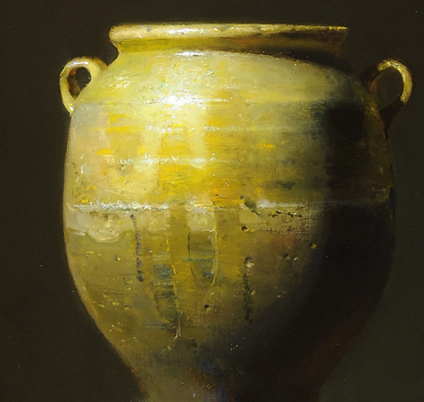Shadow Shapes and Light
Shadow shapes and light is an important part of creating the illusion of three dimension on a flat surface. The problem of creating form from flat shapes is at the heart of the history of realism in art. A shadow needs to follow the shape of an object by mimicking its outside contour.
This is an important shape to get right in describing form on a flat surface. If the shadow follows the form of the object, it will convince the viewer that when a dark and light shape are connected, they are one three dimensional form on a flat surface. Together the light and shadow can convince the viewer that your flat canvas seems real.
The simpler you make the shadow, the stronger your painting will appear. The main device available to artists to create form on a canvas is shadow on an object. Without shadows on forms, dimension are more difficult to achieve.
Keep it Simple

Light creates the illusion of form. Because shadow is laid in first, the light is then laid on and ‘attached’ to the shadow to create all the subtle ins and outs of the form. The process of ‘attaching’ light to shadow accomplishes two things. First, it creates focus in the painting because humans see by light, Second, it softens the edge and turns the form into the shadow while still maintaining two distinct and flat shapes. The illustration superimposed on the Rembrandt below is how NOT to paint your shadow.

Shadow is painted simply–crudely, even–and the light attaches to the shadow. And is–if one uses an analogy to music– the melody of the painting, Whereas the shadow is the bass. The shadow gives a grounding to the painting and holds the lights together. If a painter breaks up the shadow with too many values, the skin tones may not look as smooth or luminous.



Leave a Reply
You must be logged in to post a comment.